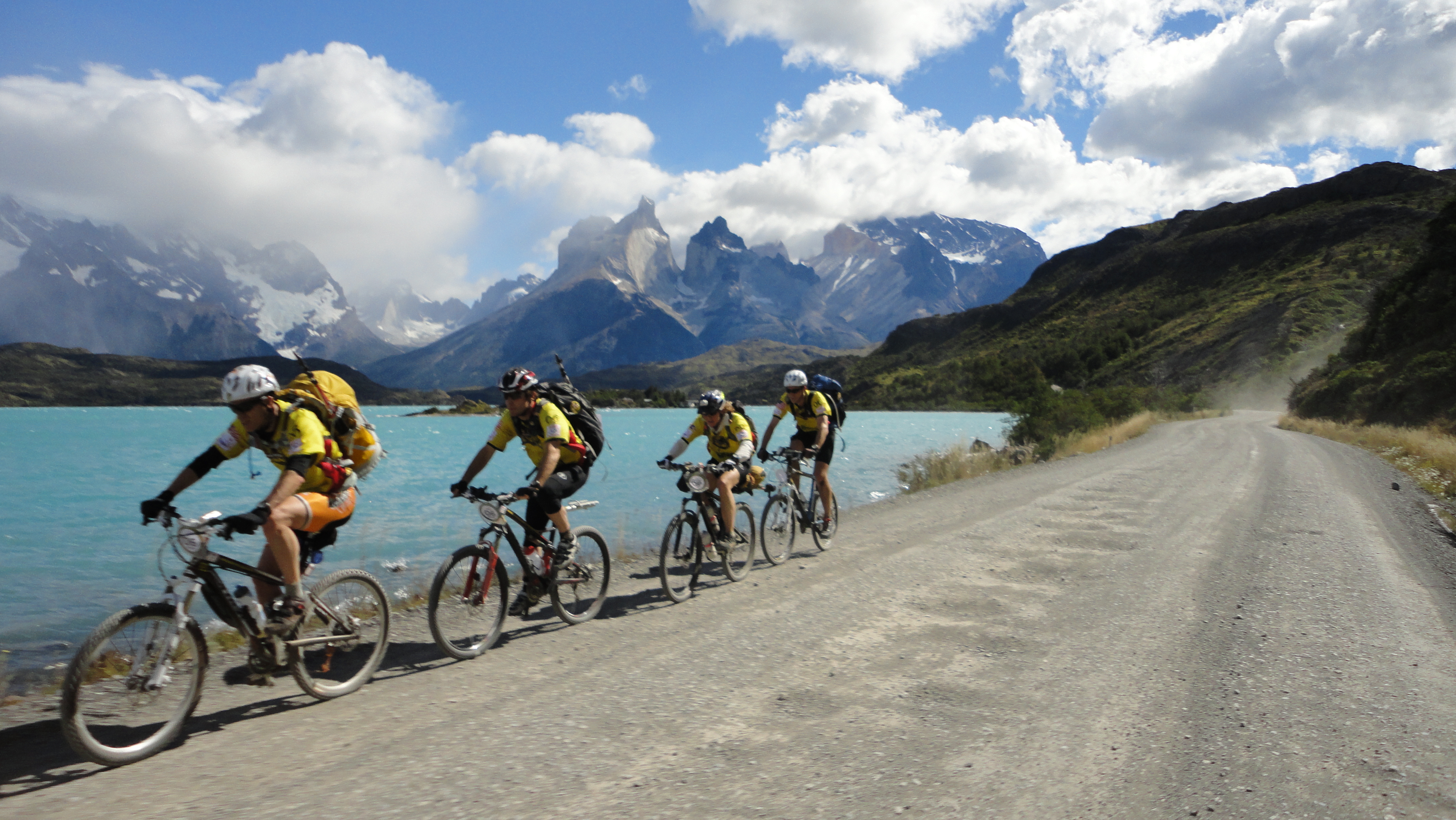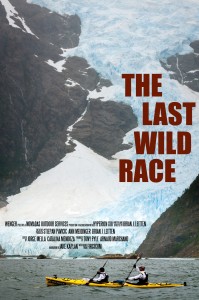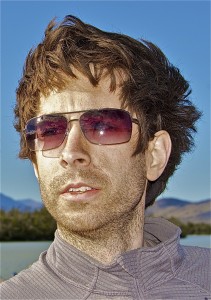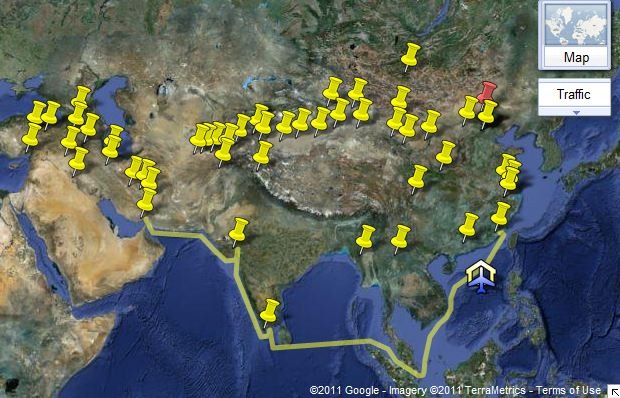I met Brian in Killarney in Ireland back in April and I have stayed in touch with him since than. Since I also have part of my heart in documentary filmmaking I wanted to hear how he got it togehter down in Patagonia. What a feat! Here´s his great story, which any film maker of any age can recognize, enjoy and learn from!
LIFE CHANGING MOMENTS
by
Brian J. Leitten
There are a few moments in everyone’s life that can change a person in astounding ways. Some are moments of accomplishment, some of greatness and some that can totally clarify one’s life in an instant.
ACCOMPLISHMENT
My first moment of accomplishment came when I earned the Eagle Scout award in the Boy Scouts of America. I was 18 years old.

GREATNESS
When I was 22, it was a moment of greatness. I became financially independent from my parents.
CLARITY
Earlier this year, I experienced a life-changing moment of clarity.
In February, I found myself in the Patagonian wilderness of Chile, stuck on a mountaintop, four people crammed into a two-person tent, waiting out a torrential downpour that had been following my group for the last four days.
As mid-morning crept upon us, the clouds began to clear, revealing a majestic landscape of icy blue fjords and luscious green mountains. A rainbow graced the spine of a mountain range as some of the world’s top endurance athletes raced against time to reach the checkpoint where my group had camped for the night.
That was when it hit me. This is what I want to do with the rest of my life.
I wasn’t actually out in the wilderness racing. I was there documenting the athletes as they competed in the toughest competition known to man, the Wenger Patagonian Expedition Race. Last December I sent an email to the race, hoping to be chosen as a volunteer during the competition. I figured I would end up setting up tents in the wilderness or cooking food for the competitors as they passed through checkpoints.
Through a series of follow-up emails, I went from being a volunteer to a cameraman to a director and finally to the executive producer. I’ve been in television production for close to a decade and this would be my first project as an executive producer.
I’ve had some challenging assignments in the past. Filming in Alaska while kayaking and backpacking, having music celebrities back out of appearances minutes before their tape time and the toughest by far, filming with a dance crew of 13 teenagers. Producing a documentary in the middle of the wilderness would prove to be the most difficult assignment of my life. Let’s play the numbers game:
4 Weeks – That’s how long I had to prepare for the filming, from 10,000 miles away.
10 Cameramen – I had never met any of them before. They had varying experience levels in filming and wilderness expertise.
7 Editors – Only 4, including myself, worked on the entire film. We had two who returned to the US, one who didn’t speak any English, two who spoke only broken English and one who became my translator.
600 kilometers – The distance of open wilderness the racers and the film crew had to traverse, using boats, trucks, helicopters, mountain bikes and our own two feet. 2 wild cameramen trekked with the first place team for 30 hours.
6 Nights – That’s how long I went with less than 2 hours of sleep while we were filming. 3 of those were with no sleep.
30 Days – We worked for 30 straight days editing the documentary together. Most of those days were 18 hours long.
Filming in the wilderness can get tricky — do you have enough battery power, memory and light? A lot of thought must go into the pre-production. No matter how thorough I try to be, I always leave something behind. This time I thought of everything, 4 cameras (10 batteries), 13 memory cards, a camera light and headlamp, a tripod and monopod a Costco size package of AA batteries, and that was just my equipment.
The crew started filming before I even got there. I had an edit to finish in New York and initial interviews had to happen while I was on a plane. In some cases it took two days to get to certain checkpoints, so I had to send cameramen into the wilderness before the race even began.
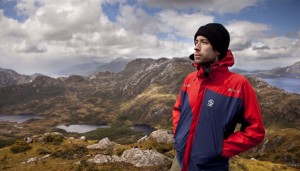
The race started at Hotel Las Torres in Torres Del Paine and we had seven cameras ready to roll, more cameras then cameramen. As the racers jumped on their mountain bikes, we spent the first 60 kilometers of the race alternating between the back of two pickup trucks and leapfrogging the teams to film them pass us by. At one point 100-mile per hour winds attempted to stop the racers, the perfect moment for story. Also the perfect moment to ruin your camera. Putting a clear filter on my camera saved me when a small pebble struck the lense, cracking the filter. The race took to the water and so did half the crew, in small zodiac boats. The other half followed the river by truck, jumping out to film the two-dozen kayaks as they passed through canyons. I was dropped on an island and had the chance to film wild horses that lived there as the racers paddled past.
The first place team, ADIDAS TERREX PRUNESCO (England), was so fast they arrived at the next checkpoint before the film crew; I leapt out of the boat to film with them as they were transitioning to the first hiking portion of the race. I ran for about 10 minutes with them, and a 15-pound camera, as they raced into the dusk with the closest team 20 minutes behind. As I navigated my way back to the checkpoint, two more teams were coming out of the checkpoint and my stamina was put to the test again.
The next two days were a blur as my crew worked without sleep to edit together a newsreel that would be transmitted around the world. I send a camera crew back into the wilderness after just two hours of sleep. And the rest of our crew had to take a seven-hour boat ride to get to the next major checkpoint. We can now say, that we have filmed in places that no human has ever been before.
We were moving on to the end of the trekking section and I spent the night on the beach waiting for teams to arrive in the darkness. None did. As the rain started and the next day passed, only the lead team came into the checkpoint and was able to start the kayaking section. That night I saw a dozen headlamps on the mountainside and climbed as quickly as possible to film them coming down in the darkness. When I reached an intersection I knew the teams would pass, I waited…and waited. After an hour I guessed the teams had bedded down for the night, so I climbed back down to the checkpoint. The next day each team confirmed my guess. Their reason — it was too dangerous at night to climb down the mountain I had gone up and back down!
Teams went from kayaking beside stunning glaciers to trekking through an insanely dense forest. Two of the cameramen went out to film with the teams during the 191-kilometer section. The rest of the crew was on their way to the end of the trekking section, while I made my way to the mountaintop checkpoint I spoke about earlier. Luckily my trip was by helicopter. This was my first time filming from a helicopter and the first time I had ever flown in one. I had seen some amazing scenery up to this point but Patagonia from the air is breathtaking.
Only 7 of the 14 teams made it to that checkpoint and they described that trek as being the toughest trek in Adventure Racing history. One team member from EASTWIND (Japan) had been hiking for two days with broken ribs. Once they finished trekking, the remaining teams completed the course on mountain bike and the film crews were back to filming from the pickup trucks.
As teams completed the race in the volcanic park, Pali Aike, I felt like I was crossing the finish line with them. Completing the filming process, sleep deprived, with an unknown crew and in a country I had never stepped foot in before was a major accomplishment. But I still had to edit the raw footage into a documentary.
I lived in Punta Arenas for the next five weeks while we pieced the documentary together. I called on friends from New York City and Los Angeles to help with graphics, music and narration. There were two editors from Santiago who volunteered their time to edit the film and in the end I was astonished and incredibly proud of what we accomplished in such a short amount of time.
But it wasn’t all work and no play. One day while we were editing, we took a day-trip to Antarctica. We were there for a total of three hours and saw two operational bases, a Russian church, rusted tanks and a family of penguins. During the last week in Chile, I travelled to Parque Nacional Torres Del Paine with two volunteers from the race staff. It was amazing. We tackled the well-known W Trail, experiencing every possible weather scenario during out four-day trip. The first night we hiked through a monsoon. The next morning we awoke to sunny skies and the crumbling sounds from Glacier Grey. On our final day of the hike, we ascended to the towers hoping to watch the sunrise. Ten minutes after the start we were hiking in a blizzard. The skies opened for a perfect photo opportunity at sunrise but quickly closed again and continued snowing for the rest of our descent back to Hotel Las Torres. The entire trip was full of perfect picture moments. Turns out after all my preparation, I did leave something behind. Unfortunately I lost my camera on the bus back to Punta Arenas.
A day later I returned back to hustle and bustle of New York City, wondering what the next step in my life would be. I spent the next month getting reacclimated to the city where I had spent the last nine years of my life. I approached Outside Television in the US, they picked up the documentary and I started submitting to film festivals.
The Killarney Adventure Film Festival was my first submission. I went to Ireland with high hopes and left with my first festival win. Best Adventure Sport Film! From there we racked up two Best Environmental Film awards from the Colorado Film Festival and the Yosemite Film Festival, as well as a Best of the Fest award from the Vanka Regule Adventure Film Festival.
After that, I partnered with the Gold Rush Mother Lode Adventure Race in Northern California. I got lucky in this case — two of the cameramen from Patagonia came on board to help document the race. We filmed an amazing race with quite the finish. Keep your eye our for another great documentary, details to come…
2011 has been an incredible year, my “Year of Adventure”. I’ve gotten to do some amazing things and document some truly epic stories. I have even taken up Adventure Racing, with three races under my belt, including a second place finish at the last one. My racing partner was one of the producers from Patagonia. I already have my mind set on racing full tilt and filming in three new countries in the next six months and I’m working with two adventurers I met in Ireland to launch our own adventure race next year.
The Last Wild Race, the documentary about the Wenger Patagonian Expedition Race, is now available at https://prescreen.com/movie/The-Last-Wild-Race.
Brian is a multi award-winning producer and director that built his reputation working extensively with MTV and the music industry. In January, Brian started his own production company, Hyperion XIII Productions and has spent the past year focusing on adventure programming, filming in the Alaskan wilderness, Chilean Patagonia and Antarctica. He executive produced and directed The Last Wild Race, a documentary on the 2011 Wenger Patagonian Expedition Race, which world premiered at the Killarney Adventure Film Festival in April 2011 and walked away winner of the Adventure Sport category. He is currently producing for Fuse TV, VEVO.com and is creating a series on the Gold Rush Adventure Race in Northern California.
